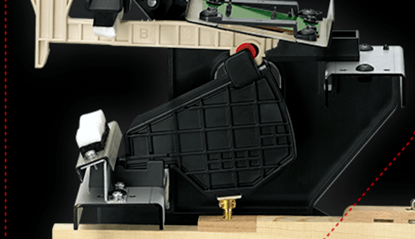Better hybrid pianos – thanks to hammers
January 06, 2016
on
on

In 2015, electronic pianos always have keys, but most of them don’t have strings; however some of them now have real hammers, because they were conceived to satisfy pianists with an unconditional attachment to traditional instruments.
If you’ve examined a piano mechanism, you’ll know that it is a precision-built instrument made with…. wood, sheepskin, felt and a bit of lead. Without getting into too much detail, you will recall that it is a double-escapement mechanism which permits perfect transmission of the kinetic energy from the keyboard to the hammers that strike the strings.
If you’ve played an electric or electronic piano, you’ll appreciate that while technical progress approaches this ideal, it doesn’t quite get there. Electronic pianos don’t sound too bad, but the elimination of the traditional mechanics causes a certain stiffness in the playing. For the studio, they offer a great compromise between the price, the sound obtained and other considerations like size and portability (not to mention the piano tuner’s fees).
During this time, research has continued to search for better ways of doing things. To this end, some of the larger electronic piano makers, such as Yamaha and Casio, are offering new hybrid instruments which emphasise not only the timbre of the instrument (obtained by digital sampling of natural sounds) but also the touch and mechanism of conventional pianos.
In a conventional piano, between the fingers of the pianist and the hammers that strike the strings, there is a key and various levers which are not all exactly the same as each other. This has the effect of introducing a delay of a small fraction of a second between the action of the finger on the key and the start of the corresponding sound – which is exactly what is missing from the keyboards of electronic pianos!
It is thus interesting to see, after decades of research and simplification, that it’s exactly the reintroduction of these subtle mechanisms into new keyboard instruments that allows pianists to forget that they are not playing on a conventional instrument.
If you’ve examined a piano mechanism, you’ll know that it is a precision-built instrument made with…. wood, sheepskin, felt and a bit of lead. Without getting into too much detail, you will recall that it is a double-escapement mechanism which permits perfect transmission of the kinetic energy from the keyboard to the hammers that strike the strings.
If you’ve played an electric or electronic piano, you’ll appreciate that while technical progress approaches this ideal, it doesn’t quite get there. Electronic pianos don’t sound too bad, but the elimination of the traditional mechanics causes a certain stiffness in the playing. For the studio, they offer a great compromise between the price, the sound obtained and other considerations like size and portability (not to mention the piano tuner’s fees).
During this time, research has continued to search for better ways of doing things. To this end, some of the larger electronic piano makers, such as Yamaha and Casio, are offering new hybrid instruments which emphasise not only the timbre of the instrument (obtained by digital sampling of natural sounds) but also the touch and mechanism of conventional pianos.
In a conventional piano, between the fingers of the pianist and the hammers that strike the strings, there is a key and various levers which are not all exactly the same as each other. This has the effect of introducing a delay of a small fraction of a second between the action of the finger on the key and the start of the corresponding sound – which is exactly what is missing from the keyboards of electronic pianos!
It is thus interesting to see, after decades of research and simplification, that it’s exactly the reintroduction of these subtle mechanisms into new keyboard instruments that allows pianists to forget that they are not playing on a conventional instrument.
Read full article
Hide full article


Discussion (0 comments)